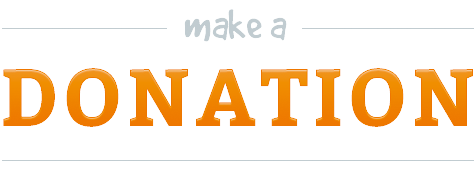Lead in Paint and ESDO’s Success Stories
ESDO had been working since 2008 from awareness-raising activities to policy advocacy on the issue of ‘Ban Lead Paint‘ in Bangladesh. In 2013 & 2015, ESDO with IPEN and EU funding had done rigorous researches and studies.
- According to the national report of ESDO on “Lead in Paint- 2013”; within this year leading paint brands in Bangladesh with a major market share had largely stopped producing paints containing more than 600 parts per million (ppm) lead.
- All relevant government ministries have discussed and reviewed Draft Guidelines for a 50-ppm and complete lead paint elimination.
- In 2015, the Director-General of Bangladesh Standards and Testing Institution (BSTI) told ESDO in a meeting that it would enforce a 50 ppm mandatory standard for lead in household enamel.
- All relevant government ministries have discussed and reviewed Draft Guidelines for a 50 ppm and complete lead paint elimination.
- In 2015, the Director-General of Bangladesh Standards and Testing Institution (BSTI) told ESDO in a meeting that it would enforce a 50-ppm mandatory standard for lead in household enamel.
- In 2018, Bangladesh Standard and Testing Institute (BSTI) has finalized a standard for the paint manufacturing industry setting the limit of harmful lead content for household paint at a maximum of 90 ppm (parts per million) which make Bangladesh the only country with a mandatory standard on Lead Paint in South – East Asia.
As of 30 September 2019, 73 countries have legally binding controls to limit the production, import, and sale of lead paints, which is 38% of all countries. 90-ppm total lead is the concentration limit recommended by the “Model Law and Guidance for Regulating Lead Paint”. The lowest, most protective regulatory limit for lead paints has been set in countries. Nine countries (23%) in the Asia and Pacific Region have lead paint laws. To combat lead poisoning and use, the Lead in Paint Component of the SAICM/GEF Project promotes regulatory and voluntary action by government and industry to phase out lead in paint.
Updates from Paint Manufacturing Association:
As per SRO for Paint Supply and Marketing BSTI CM, certification is mandatory and From Bangladesh Paint Manufacturing Association has taken initiative not to use Lead in the Decorative Paints, advised all of the BPMA Members stop to use lead content material in decorative Paints, and advised to apply for BSTI CM License. In this regard, all the active members applied for BSTI CM license, and maximum manufacturers have submitted the Paints sample for testing purposes for CM licensing. Major Market Players have received the CM License after qualifying the paints sample tested by BSTI to meet the set up of the Decorative Paints Standard. Therefore, in Conclusion, it is mentioned that Bangladesh Paint Manufacturing Association has led to the stop to the use of Lead content materials in Decorative Paints and BSTI is the main monitoring institute to protect to use of lead-containing materials in decorative Paints. FOR BSTI CM LICENSE LEAD is prohibited to use in Decorative paints.
Chemical Composition:
Many older homes have indoor or outdoor surfaces coated with lead-based paint. White lead, or lead (II) carbonate (PbCO3), is a typical example and was once widely used to paint wooden surfaces in homes. Other lead compounds, like vivid yellow lead chromate (PbCrO4), are used as colored pigments
Initiatives:
Every year since 2012, from 20th-26th October ESDO, has been observing International Lead Poisoning Prevention Week of Action (ILPPPW) by conducting different types youth involved competitions, human chain, and round table meetings with relevant stakeholders and associations. In this International Lead Poisoning Prevention Week (ILPPW), ESDO tries to raise awareness and promotes action to address the human health effect of lead exposure, especially for children. During the week, government, academicians, industry, and civil society advance efforts to prevent childhood lead poisoning, and special laws to eliminate lead in paint.
In 2020, ESDO with IPEN starting another round of paint sample testing activity to assess the current situation of paints and what is the update of concentration after the mandatory law.
International Lead Poisoning Prevention Week – 2021
ESDO will observe the ILPPW-2021 with great enthusiasm every year by organizing a human chain in the last week of October in front of the national press club and other important places in Dhaka city and a round table meeting at the ESDO Head office or Department of Environment auditorium. This year, we have planned to celebrate the week in three separate ways. This year we will organize a powerpoint presentation competition among the young generation (University Students) and a virtual webinar to engage them with our campaign and to make them aware of lead poisoning. After that, we will organize a Human Chain with 50 volunteers and the ESDO team. At the end of the week, we will organize a stakeholder meeting with the government and paint manufacturer authorities.
Figure: ILPPWA-Announcement-Brochure
Specific Objectives:
• Pushing for legislation to ban leaded paint both in production, import, and sale. ESDO wants a total ban on leaded paints because that was our primary motto to eliminate lead paint. We are sticking to that point and we just achieved one hurdle, which is about the standard only on decorative paint. The final hurdle for us to achieve a total ban is that there is no lead for all types of paint and legislation on it.
• Raising awareness about the health effects of lead poisoning.
Date and Location:
20 October to 30 October 2021. Around Dhaka city, Bangladesh.










